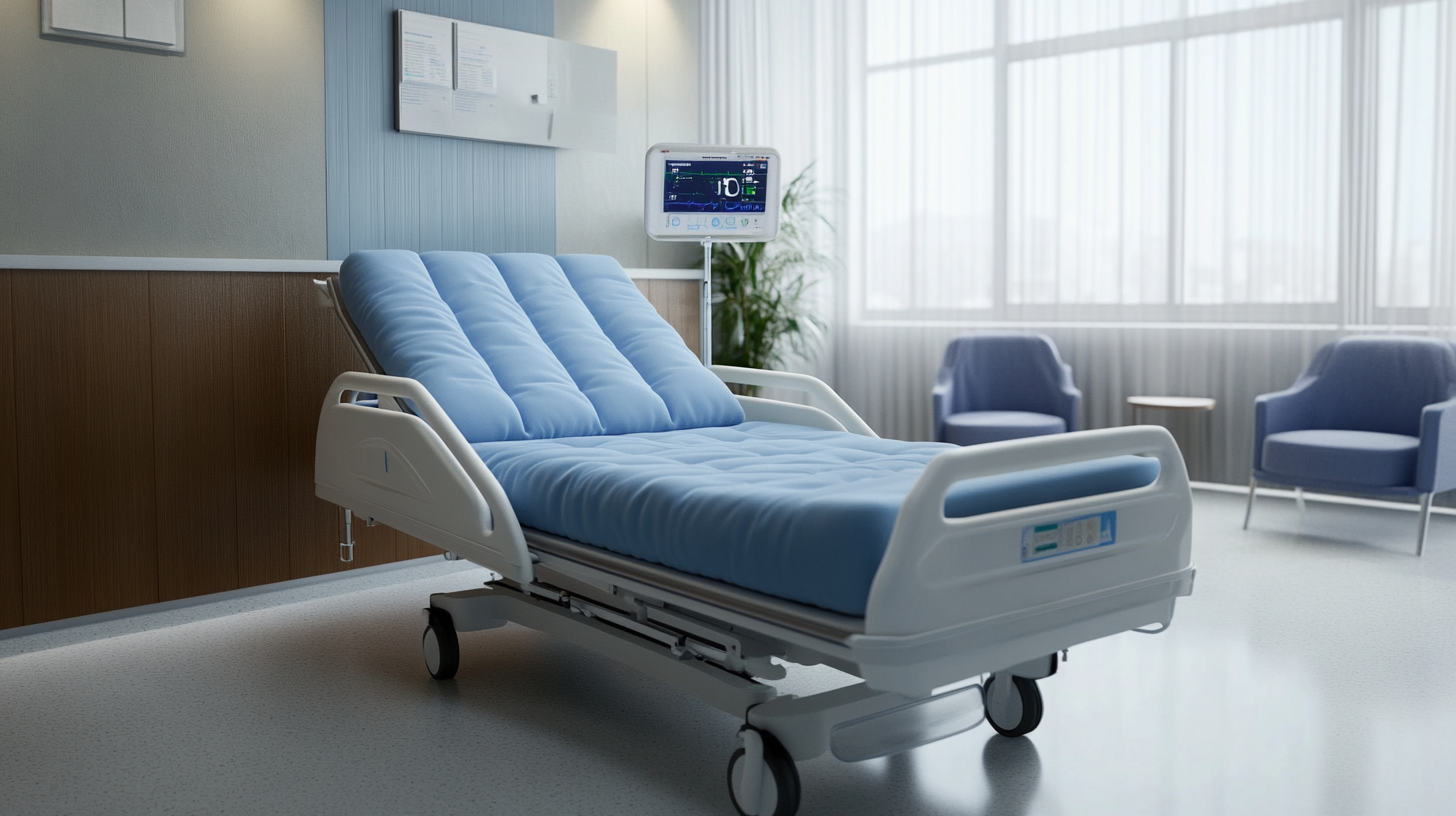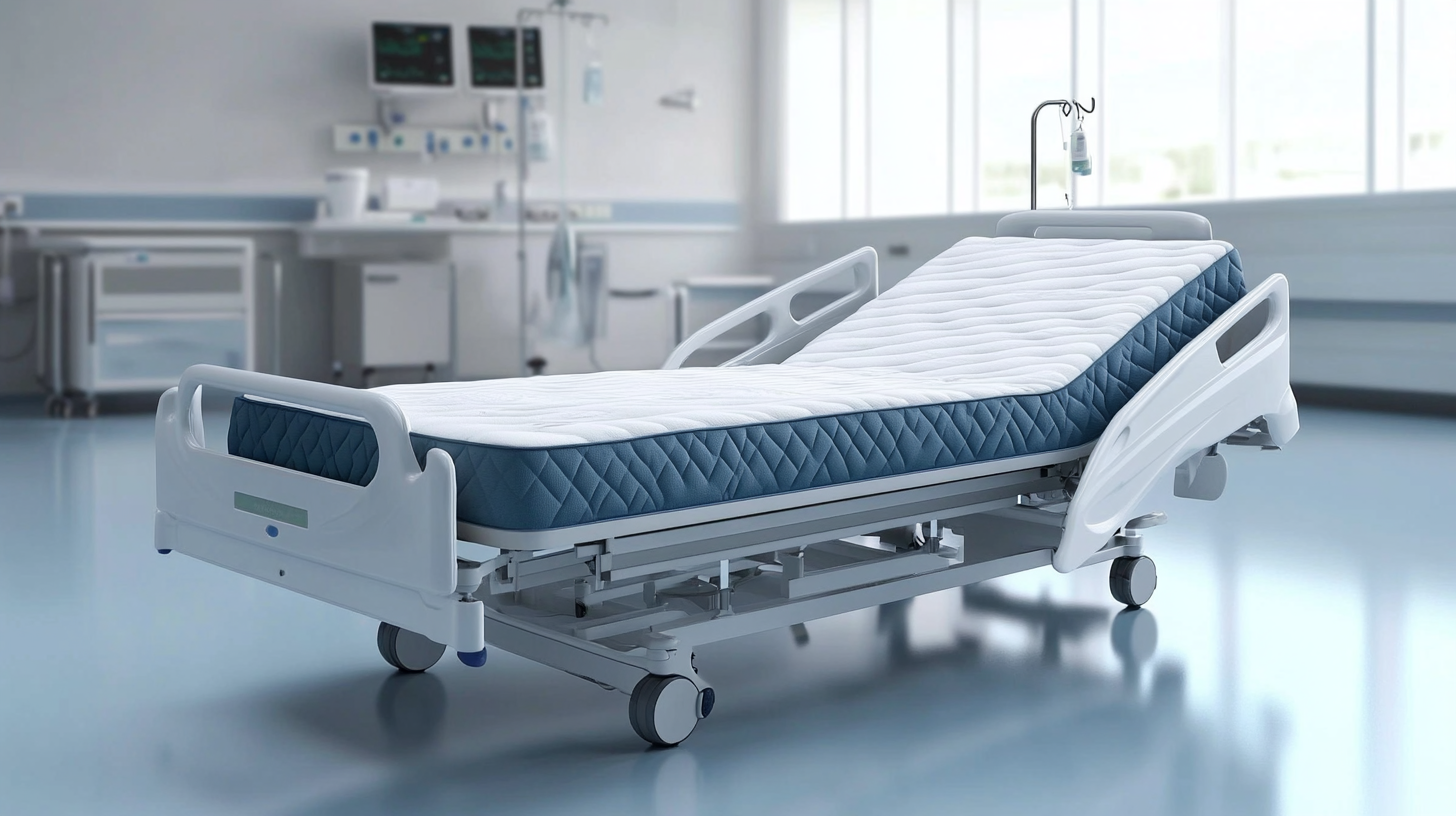In the ever-evolving landscape of healthcare, the need for effective pressure injury prevention is paramount. A key component in this strategy is the Anti-Decubitus Mattress, which plays a critical role in reducing the risk of pressure ulcers among patients with limited mobility. According to a report by the National Pressure Injury Advisory Panel, pressure injuries affect approximately 2.5 million patients annually in the United States alone, resulting in increased healthcare costs and prolonged hospital stays. As healthcare facilities look toward 2025, integrating advanced technologies into patient care becomes essential. This ultimate guide delves into the critical factors to consider when selecting the best Anti-Decubitus Mattress, ensuring that your facility meets the diverse needs of its patients while adhering to the latest industry standards and innovations.

When selecting the best anti decubitus mattress for your healthcare facility, it’s crucial to focus on several key features that can significantly enhance patient care. According to a report by the National Pressure Ulcer Advisory Panel (NPUAP), pressure injuries affect approximately 2.5 million patients annually in the United States, underlining the importance of investing in quality mattresses to prevent these conditions. Look for mattresses with advanced pressure redistribution technology, such as alternating pressure relief systems or high-density foam, which can reduce the interface pressure between the patient and the mattress, thus minimizing the risk of skin breakdown.
Another essential feature is the mattress’s ability to facilitate moisture management and temperature control. A study published in the Journal of Wound Care indicates that moisture and heat buildup can exacerbate skin issues, leading to higher incidences of decubitus ulcers. Mattresses with breathable materials and moisture-wicking properties are beneficial in maintaining a comfortable microclimate for patients. Additionally, consider ease of cleaning and maintenance, as mattresses specifically designed for healthcare settings often come with waterproof covers that protect against fluids and contaminants, ensuring a hygienic environment for patient recovery.
When selecting the best anti-decubitus mattress for healthcare facilities, it’s essential to understand the different types available in the market, each designed to address specific patient needs. The primary categories include solid-filled, air-filled, and fluid-filled mattresses. Solid-filled mattresses are often made from high-density foam, providing consistent support and pressure relief. They are ideal for patients who require stability and a firm surface.
On the other hand, air-filled mattresses utilize adjustable air chambers to help distribute weight evenly, which is particularly beneficial for patients at high risk of developing pressure ulcers. These mattresses can be customized for individual comfort levels and can adapt to changes in a patient’s condition. Fluid-filled mattresses offer another alternative, using special materials that can conform to the body’s contours, providing excellent pressure relief and comfort. Understanding these distinctions will help healthcare facilities make informed decisions that align with their patients' needs, ensuring effective prevention of pressure sores and enhancing overall patient care.
| Type of Mattress | Pressure Relief | Material | Ventilation | Weight Capacity |
|---|---|---|---|---|
| Foam Mattress | Good | Viscoelastic Foam | Moderate | Up to 300 lbs |
| Alternating Pressure Mattress | Excellent | Air Cells | High | Up to 350 lbs |
| Low Air Loss Mattress | Excellent | Air and Foam | Very High | Up to 500 lbs |
| Gel Mattress | Good | Gel-infused Foam | Moderate | Up to 300 lbs |
| Hybrid Mattress | Very Good | Foam and Air | High | Up to 400 lbs |
The choice of material quality in the production of anti decubitus mattresses is paramount, especially in healthcare facilities where patient safety and comfort are priorities. High-quality materials, such as viscoelastic foam and gel-infused technologies, provide superior pressure redistribution, significantly reducing the risk of pressure ulcers. According to a study by the National Pressure Injury Advisory Panel, 2.5 million patients in the U.S. develop pressure ulcers annually, a statistic that underscores the critical need for effective prevention strategies. Investing in high-quality mattresses can therefore not only enhance patient outcomes but also reduce healthcare costs associated with treating these avoidable injuries.
Furthermore, the durability and maintenance requirements of the mattress materials play a crucial role in long-term care settings. A report by the Centers for Medicare & Medicaid Services highlights that hospitals could save up to $3.6 billion annually by preventing pressure ulcers through the use of high-quality equipment. Mattresses made from durable materials not only maintain their integrity and supportiveness over time but also often have easier-to-clean surfaces, contributing to better infection control practices. Thus, selecting an anti decubitus mattress with emphasis on material quality is essential for both patient health and facility efficiency.

When considering the investment in anti-decubitus mattresses for your healthcare facility, assessing the budget is crucial. First, it's essential to understand the specific needs of your patients and the level of care required. Conduct a thorough analysis of your facility's patient population, as this will guide you in selecting mattresses that cater to varying degrees of pressure ulcer risk. This step helps in justifying the expenditure and determining how many mattresses will be necessary to ensure adequate coverage in your facility.
Next, factor in the cost of quality anti-decubitus mattresses against their long-term benefits. While lower-priced options may seem tempting, investing in higher-quality mattresses can reduce incidents of pressure ulcers, thereby decreasing the overall costs associated with treating these conditions. Additionally, consider the lifespan of the mattresses and any warranties offered, as these elements contribute to the long-term value of the investment. Allocating your budget effectively requires balancing immediate costs with future healthcare savings, ensuring that both patient care and the financial health of your facility are prioritized.
The global anti-decubitus mattress market is witnessing significant advancements in design and manufacturing solutions, driven by the increasing awareness of healthcare needs, especially amid aging populations. The market is projected to grow from USD 41.86 billion in 2023 to an impressive USD 71.69 billion by 2032. This growth is largely attributed to the rising demand for advanced pressure-relieving technologies that enhance patient comfort and support.

In countries like Japan, where the aging population presents both challenges and opportunities, innovative technologies are emerging to cater to this demographic shift. Manufacturers are focusing on integrating smart technologies into mattress designs to monitor patient movement and optimize support, ensuring better health outcomes. Furthermore, the growth of the Indian home and interiors market indicates a rising trend in versatility and customization in mattress solutions, suggesting a potential parallel market for specialized anti-decubitus products that cater to specific needs in healthcare facilities. The convergence of these global trends highlights the importance of selecting the right anti-decubitus mattress, ensuring that healthcare providers prioritize both quality and functionality to enhance patient care.
